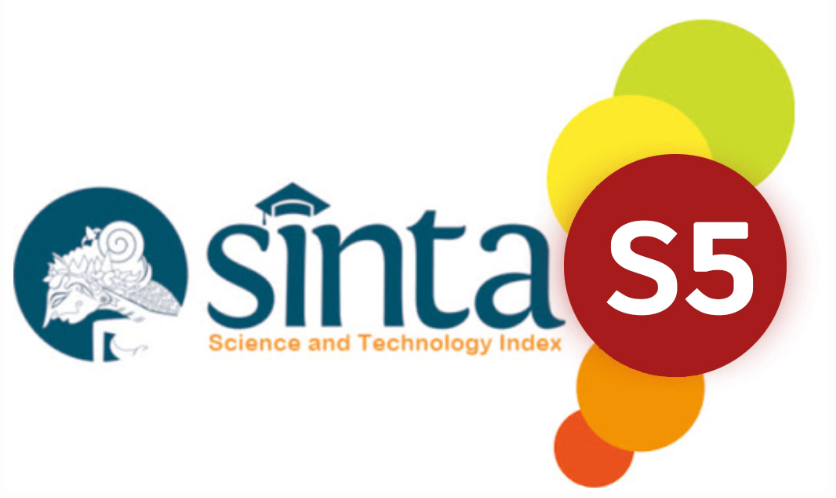Effectivity and Safety Profile of Metformin as an Adjuvant Immunomodulator in Psoriasis: A Literature Review
DOI:
https://doi.org/10.32734/sumej.v8i2.18218Keywords:
immunomodulator, metformin, psoriasis, safetyAbstract
Background: Psoriasis is a chronic inflammatory skin disorder associated with an increased risk of comorbidities and reduced quality of life. Metformin, a first-line therapy for type 2 diabetes mellitus (T2DM), has been investigated for its potential as an adjuvant therapy for psoriasis. Objective: This literature review aims to explore the molecular mechanisms by which metformin exerts immunomodulatory effects and assess clinical studies that evaluate its efficacy and safety profile. Methods: A literature search was conducted in PubMed, MDPI, Epistemonikos, ScienceDirect, and Wiley Online Library, with the keywords: metformin AND psoriasis AND immunomodulator AND safety. Results: Qualitative synthesis revealed that metformin exhibits anti-inflammatory, anti-proliferative, and pro-apoptotic effects through induction of G0/G1 cycle arrest and inhibition of mechanistic target of rapamycin (mTOR), nuclear factor-kappa B (NF-κB), and Raf/MEK/extracellular signal-regulated kinase (Raf/MEK/ERK) pathways. These mechanisms correlate with improvements in psoriasis severity indices, including Psoriasis Area Severity Index (PASI), Erythema, Scaling, and Induration (ESI), and Physician Global Assessment (PGA) scores (p < 0.05. A rare case of drug reaction with eosinophilia and systemic symptoms (DRESS) syndrome has been reported. Conclusion: Metformin demonstrates potential as an adjuvant immunomodulatory treatment for psoriasis. However, a rare adverse effect highlights the need for careful patient selection and evaluation.
Downloads
References
Armstrong AW, Read C. Pathophysiology, clinical presentation, and treatment of psoriasis: a review. JAMA. 2020;323(19):1945–60. Available from: https://doi.org/10.1001/jama.2020.4006.
Rendon A, Schakel K. Psoriasis pathogenesis and treatment. Int J Mol Sci. 2019;20(6):1475. Available from: https://doi.org/10.3390/ijms20061475.
Takeshita J, Grewal S, Langan SM, Mehta NN, Ogdie A, Van Voorhees AS, et al. Psoriasis and comorbid diseases: epidemiology. J Am Acad Dermatol. 2017;76(3):377–90. Available from: https://doi.org/10.1016/j.jaad.2016.07.064.
Parisi R, Iskandar IYK, Kontopantelis E, Augustin M, Griffiths CEM, Ashcroft DM. National, regional, and worldwide epidemiology of psoriasis: systematic analysis and modelling study. BMJ. 2020;369:m1590. Available from: https://doi.org/10.1136/bmj.m1590.
World Health Organization. Global report on psoriasis [Internet]. Geneva: WHO; 2016 [cited 2024 Mar 9]. Available from: https://www.who.int/publications/i/item/9789241565189.
Nitiyoso N. Pilihan pengobatan sistemik pada psoriasis. Cermin Dunia Kedokteran. 2022;49(3):164–9. Available from: https://doi.org/10.55175/cdk.v49i3.213.
Armstrong AW, Puig L, Joshi A, Kircik L, Menter A. Comparison of biologics and oral treatments for plaque psoriasis: a meta-analysis. JAMA Dermatol. 2020;156(3):258–69. Available from: https://doi.org/10.1001/jamadermatol.2019.4029.
Lee HJ, Kim M. Challenges and future trends in the treatment of psoriasis. Int J Mol Sci. 2023;24(17):13313. Available from: https://doi.org/10.3390/ijms241713313.
Kalb RE, Fiorentino DF, Lebwohl MG, Toole J, Poulin Y, Cohen AD, et al. Risk of serious infection with biologic and systemic treatment of psoriasis: results from the Psoriasis Longitudinal Assessment and Registry (PSOLAR). JAMA Dermatol. 2015;151(9):961–9. Available from: https://doi.org/10.1001/jamadermatol.2015.0718.
Abramczyk R, Plaszczyca K, Chmielik E, Szmigielska I, Wojtowicz-Prus P, Wcislo-Dziadecka D. Diabetes and psoriasis: different sides of the same prism. Diabetes Metab Syndr Obes. 2020;13:3571–7. Available from: https://doi.org/10.2147/dmso.s273147.
Brazzelli V, Maffioli P, Bolcato V, Ciolfi C, D'Angelo A, Tinelli C, et al. Psoriasis and diabetes, a dangerous association: evaluation of insulin resistance, lipid abnormalities, and cardiovascular risk biomarkers. Front Med (Lausanne). 2021 Mar 23;8:605691. Available from: https://doi.org/10.3389/fmed.2021.605691.
Lonnberg AS, Skov L, Skytthe A, Kyvik KO, Pedersen OB, Thomsen SF. Association of psoriasis with the risk for type 2 diabetes mellitus and obesity. JAMA Dermatol. 2016 Jul 1;152(7):761–7. Available from: https://doi.org/10.1001/jamadermatol.2015.6262.
Oglesby W, Kara AM, Granados H, Cervantes JL. Metformin in tuberculosis: beyond control of hyperglycemia. Infection. 2019 Oct;47(5):697–702. Available from: https://doi.org/10.1007/s15010-019-01322-5.
Malaekeh-Nikouei A, Shokri Naei S, Karbasforoushan S, Bahari H, Rahimi VB, Heidari R, et al. Metformin beyond an anti-diabetic agent: a comprehensive and mechanistic review on its effects against natural and biochemical toxins. Biomed Pharmacother. 2023 Sep;65:115263. Available from: https://doi.org/10.1016/j.biopha.2023.115263.
Bost F, Rena G, Viollet B. Metformin: beyond diabetes. Front Endocrinol (Lausanne). 2019 Dec 6;10:851. Available from: https://doi.org/10.3389/fendo.2019.00851.
Tam HTX, Thuy LND, Vinh NM, et al. The combined use of metformin and methotrexate in psoriasis patients with metabolic syndrome. Dermatol Res Pract. 2022;2022:9838867. Available from: https://doi.org/10.1155/2022/9838867.
El-Gharabawy RM, Ahmed AS, Al-Najjar AH. Mechanism of action and effect of immune-modulating agents in the treatment of psoriasis. Biomed Pharmacother. 2017;85:141–7. Available from: https://doi.org/10.1016/j.biopha.2016.11.105.
Singh S, Bhansali A. Randomized placebo control study of metformin in psoriasis patients with metabolic syndrome (systemic treatment cohort). Indian J Endocrinol Metab. 2017;21:581–7. Available from: https://doi.org/10.4103/ijem.ijem_46_17.
Singh S, Bhansali A. Randomized placebo control study of insulin sensitizers (metformin and pioglitazone) in psoriasis patients with metabolic syndrome (topical treatment cohort). BMC Dermatol. 2016;16:12. Available from: https://doi.org/10.1186/s12895-016-0049-y.
Su YJ, Chen TH, Hsu CY, Chiu WT, Lin YS, Chi CC. Safety of metformin in psoriasis patients with diabetes mellitus: a 17-year population-based real-world cohort study. J Clin Endocrinol Metab. 2019 Aug;104(8):3279–86. Available from: https://doi.org/10.1210/jc.2018-02526.
Ba W, Xu Y, Yin G, Yang J, Wang R, Chi S, et al. Metformin inhibits pro-inflammatory responses via targeting nuclear factor-kB in HaCaT cells. Cell Biochem Funct. 2019 Jan;37(1):4–10. Available from: https://doi.org/10.1002/cbf.3367.
Liu Y, Yang F, Ma W, Sun Q. Metformin inhibits proliferation and proinflammatory cytokines of human keratinocytes in vitro via mTOR-signaling pathway. Pharm Biol. 2016 Jul;54(7):1173–8. Available from: https://doi.org/10.3109/13880209.2015.1057652.
Wu J, Xiao S, Ren J, Zhang D. A unified mitochondria mechanistic target of rapamycin acyl-coenzyme A dehydrogenase 10 signal relay modulation for metformin growth inhibition in human immortalized keratinocytes cells. J Cell Biochem. 2019 Feb;120(2):1773–82. Available from: https://doi.org/10.1002/jcb.27481.
Wang X, Li R, Zhao X, Yu X, Sun Q. Metformin promotes HaCaT cell apoptosis through generation of reactive oxygen species via Raf-1-ERK1/2-Nrf2 inactivation. Inflammation. 2018 Jun;41:948–58. Available from: https://doi.org/10.1007/s10753-018-0749-z.
Matsuda-Taniguchi T, Takemura M, Nakahara T, Hashimoto-Hachiya A, Takai-Yumine A, Furue M, et al. The antidiabetic agent metformin inhibits IL-23 production in murine bone-marrow-derived dendritic cells. J Clin Med. 2021 Nov 29;10(23):5610. Available from: https://doi.org/10.3390/jcm10235610.
Tashiro T, Sawada Y. Psoriasis and systemic inflammatory disorders. Int J Mol Sci. 2022 Apr 18;23(8):4457. Available from: https://doi.org/10.3390/ijms23084457.
Patrick MT, Stuart PE, Zhang H, Zhao Q, Yin X, He K, et al. Causal relationship and shared genetic loci between psoriasis and type 2 diabetes through trans-disease meta-analysis. J Invest Dermatol. 2021 Jun;141(6):1493–502. Available from: https://doi.org/10.1016/j.jid.2020.11.025.
Brazzelli V, Maffioli P, Bolcato V, Ciolfi C, D'Angelo A, Tinelli C, et al. Psoriasis and diabetes, a dangerous association: evaluation of insulin resistance, lipid abnormalities, and cardiovascular risk biomarkers. Front Med (Lausanne). 2021 Mar 23;8:605691. Available from: https://doi.org/10.3389/fmed.2021.605691.
Sluczanowska-Glabowska S, Staniszewska M, Marchlewicz M, Duchnik E, Luczkowska K, Safranow K, et al. Adiponectin, leptin and resistin in patients with psoriasis. J Clin Med. 2023 Jan 13;12(2):663. Available from: https://doi.org/10.3390/jcm12020663.
Kielbowski K, Bakinowska E, Ostrowski P, Pala B, Gromowska E, Gurazda K, et al. The role of adipokines in the pathogenesis of psoriasis. Int J Mol Sci. 2023 Mar 28;24(7):6390. Available from: https://doi.org/10.3390/ijms24076390.
Guo Z, Yang Y, Liao Y, Shi Y, Zhang LJ. Emerging roles of adipose tissue in the pathogenesis of psoriasis and atopic dermatitis in obesity. JID Innov. 2022 Jan 1;2(1):100064. Available from: https://doi.org/10.1016/j.xjidi.2021.100064.
Woo YR, Cho DH, Park HJ. Molecular mechanisms and management of a cutaneous inflammatory disorder: psoriasis. Int J Mol Sci. 2017 Dec 11;18(12):2684. Available from: https://doi.org/10.3390/ijms18122684.
Krueger JG, Eyerich K, Kuchroo VK, Ritchlin CT, Abreu MT, Elloso MM, et al. IL-23 past, present, and future: a roadmap to advancing IL-23 science and therapy. Front Immunol. 2024 Apr 15;15:1331217. Available from: https://doi.org/10.3389/fimmu.2024.1331217.
Liu T, Li S, Ying S, Tang S, Ding Y, Li Y, et al. The IL-23/IL-17 pathway in inflammatory skin diseases: from bench to bedside. Front Immunol. 2020 Nov 17;11:594735. Available from: https://doi.org/10.3389/fimmu.2020.594735.
Korman NJ. Management of psoriasis as a systemic disease: what is the evidence? Br J Dermatol. 2020 Apr 1;182(4):840–8. Available from: https://doi.org/10.1111/bjd.18245.
Ghoreschi K, Balato A, Enerback C, Sabat R. Therapeutics targeting the IL-23 and IL-17 pathway in psoriasis. Lancet. 2021 Feb 20;397(10275):754–66. Available from: https://doi.org/10.1016/S0140-6736(21)00184-7.
Sharbaji R, Siyah P. Targeting IL-23 with small molecule inhibitors: a new horizon in psoriasis therapy. Chemistry Select. 2025 Feb;10(8):e202406013. Available from: https://doi.org/10.1002/slct.202406013.
Bridgewood C, Fearnley GW, Berekmeri A, Laws P, Macleod T, Ponnambalam S, et al. IL-36y is a strong inducer of IL-23 in psoriatic cells and activates angiogenesis. Front Immunol. 2018 Feb 26;9:200. Available from: https://doi.org/10.3389/fimmu.2018.00200.
Iznardo H, Puig L. Exploring the role of IL-36 cytokines as a new target in psoriatic disease. Int J Mol Sci. 2021 Apr 21;22(9):4344. Available from: https://doi.org/10.3390/ijms22094344.
Li W, Jin K, Luo J, Xu W, Wu Y, Zhou J, et al. NF-kB and its crosstalk with endoplasmic reticulum stress in atherosclerosis. Front Cardiovasc Med. 2022 Sep 20;9:988266. Available from: https://doi.org/10.3389/fcvm.2022.988266.
Yuan ZC, Xu WD, Liu XY, Liu XY, Huang AF, Su LC. Biology of IL-36 signaling and its role in systemic inflammatory diseases. Front Immunol. 2019 Oct 31;10:2532. Available from: https://doi.org/10.3389/fimmu.2019.02532.
Buerger C. Epidermal mTORC1 signaling contributes to the pathogenesis of psoriasis and could serve as a therapeutic target. Front Immunol. 2018 Nov 30;9:2786. Available from: https://doi.org/10.3389/fimmu.2018.02786.
Ardestani A, Lupse B, Kido Y, Leibowitz G, Maedler K. mTORC1 signaling: a double-edged sword in diabetic B cells. Cell Metab. 2018 Feb 6;27(2):314–31. Available from: https://doi.org/10.1016/j.cmet.2017.11.004.
Chun Y, Kim J. AMPK–mTOR signaling and cellular adaptations in hypoxia. Int J Mol Sci. 2021 Sep 9;22(18):9765. Available from: https://doi.org/10.3390/ijms22189765.
Fakhrioliaei A, Tanhaei S, Pakmehr S, Noori Shakir M, Qasim MT, Hariri M, et al. Potential role of Nrf2, HER2, and ALDH in cancer stem cells: a narrative review. J Membr Biol. 2024 Apr;257(1):3–16. Available from: https://doi.org/10.1007/s00232-024-00307-2.
Wu PK, Becker A, Park JI. Growth inhibitory signaling of the Raf/MEK/ERK pathway. Int J Mol Sci. 2020 Jul 30;21(15):5436. Available from: https://doi.org/10.3390/ijms21155436.
Ngo V, Duennwald ML. Nrf2 and oxidative stress: a general overview of mechanisms and implications in human disease. Antioxidants (Basel). 2022 Nov 27;11(12):2345. Available from: https://doi.org/10.3390/antiox11122345.
Ezhilarasan D. Hepatotoxic potentials of methotrexate: understanding the possible toxicological molecular mechanisms. Toxicology. 2021 Jun 30;458:152840. Available from: https://doi.org/10.1016/j.tox.2021.152840.
Berkemeyer A, Wagner E, Hashmat S, Azzam RK. Methotrexate induced hepatotoxicity in metabolic dysfunction-associated steatotic liver disease. JPGN Rep. 2024 Nov;5(4):548-51. Available from: https://doi.org/10.1002/jpr3.12127.
Chung MM, Nicol CJ, Cheng YC, Lin KH, Chen YL, Pei D, et al. Metformin activation of AMPK suppresses AGE-induced inflammatory response in hNSCs. Exp Cell Res. 2017 Mar 1;352(1):75–83. Available from: https://doi.org/10.1016/j.yexcr.2017.01.017.
Wu CY, Shieh JJ, Shen JL, Liu YY, Chang YT, Chen YJ. Association between antidiabetic drugs and psoriasis risk in diabetic patients: results from a nationwide nested case-control study in Taiwan. J Am Acad Dermatol. 2015 Jan 1;72(1):123–30. Available from: https://doi.org/10.1016/j.jaad.2014.08.042.
Muraguchi T, Nanba D, Nishimura EK, Tashiro T. IGF-1R deficiency in human keratinocytes disrupts epidermal homeostasis and stem cell maintenance. J Dermatol Sci. 2019 May 1;94(2):298–305. Available from: https://doi.org/10.1016/j.jdermsci.2019.05.001.
Kiernan K, Alwarawrah Y, Nichols AG, Danzaki K, MacIver NJ. Insulin and IGF-1 have both overlapping and distinct effects on CD4+ T cell mitochondria, metabolism, and function. Sci Rep. 2024 Feb 21;14(1):4331. Available from: https://doi.org/10.1038/s41598-024-54836-w.
Malhotra B, Hiteshi P, Khalkho P, Malik R, Bhadada SK, Bhansali A, et al. Bladder cancer with pioglitazone: a case–control study. Diabetes Metab Syndr. 2022 Nov 1;16(11):102637. Available from: https://doi.org/10.1016/j.dsx.2022.102637.
Adil M, Khan RA, Ghosh P, Venkata SK, Kandhare AD, Sharma M. Pioglitazone and risk of bladder cancer in type 2 diabetes mellitus patients: a systematic literature review and meta-analysis of observational studies using real-world data. Clin Epidemiol Glob Health. 2018 Jun 1;6(2):61–8. Available from: https://doi.org/10.1016/j.cegh.2017.08.002.
Voore P, Odigwe C, Mirrakhimov AE, Rifai D, Iroegbu NA. DRESS syndrome following metformin administration: a case report and review of the literature. Am J Ther. 2016 Nov 1;23(6):e1970–3. Available from: https://doi.org/10.1097/MJT.0000000000000292.
Calle AM, Aguirre N, Ardila JC, Villa RC. DRESS syndrome: a literature review and treatment algorithm. World Allergy Organ J. 2023 Mar 1;16(3):100673. Available from: https://doi.org/10.1016/j.waojou.2022.100673.
Downloads
Published
How to Cite
Issue
Section
License
Copyright (c) 2025 Sumatera Medical Journal

This work is licensed under a Creative Commons Attribution-ShareAlike 4.0 International License.
The Authors submitting a manuscript do so on the understanding that if accepted for publication, copyright of the article shall be assigned to Sumatera Medical Journal (SUMEJ) and Faculty of Medicine as well as TALENTA Publisher Universitas Sumatera Utara as publisher of the journal.
Copyright encompasses exclusive rights to reproduce and deliver the article in all form and media. The reproduction of any part of this journal, its storage in databases and its transmission by any form or media, will be allowed only with a written permission from Sumatera Medical Journal (SUMEJ).
The Copyright Transfer Form can be downloaded here.
The copyright form should be signed originally and sent to the Editorial Office in the form of original mail or scanned document.











